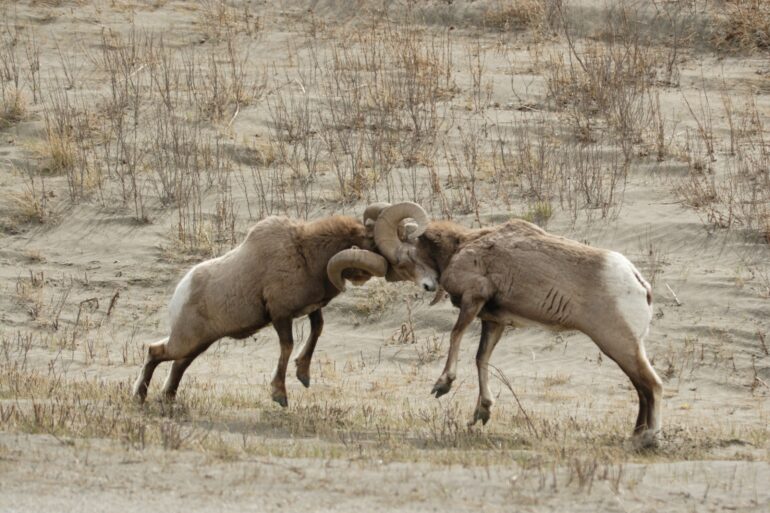Scientists used to think power in animals played out in a tidy and simple way. Nature is a dog-eat-dog place. Rams butt heads in a thunderous spectacle, and the winning male gets to mate with a female. Bigger, stronger, meaner animals beat up smaller, weaker, more timid ones, and then walk, fly or swim away with the prize.
All that’s certainly going on in the wild. But the natural world, it turns out, is so much more interesting than simply squaring off in brutish battles. As in tales of palace intrigue, the quest for power among animals is subtle, nuanced, strategic and, dare I say, beautiful.
I’m an animal behaviorist and evolutionary biologist who has been studying complex social behavior in nonhumans for 30 years. As I describe in my book, “Power in the Wild: The Subtle and Not-So-Subtle Ways Animals Strive for Control over Others,” I have come to learn that many power struggles in animals look more like scenes from a Shakespearean drama than rounds in a boxing match.
To study the dynamics of power in nonhumans we need a definition. How do we gauge power in other species? I think of power as the ability to direct, control or influence the behavior of others in order to control access to resources. Using that definition, power pervades every aspect of the social lives of animals: what they eat, where they eat, where they live, who they mate with, how many offspring they produce, who they join forces with, who they work to depose and more.
Spies in the water
For years, my former Ph.D. student Ryan Earley and I were obsessed with power and spying in groups of a tiny fish called the swordtail. So much so that Ryan ended up building his Ph.D. dissertation around these fish whose brains can sit comfortably on the head of a pin.

Swordtails in an aquarium setting seem to keep tabs on who’s up and who’s down in the power rankings.
NASA
When two males in a group of swordtails meet, they often engage in a series of chases, followed by displays in which they twist their bodies into an S shape. If it’s not clear at that point who is top swordtail, the fish ram into each other. And if even that doesn’t settle matters, they circle each other, lock jaws and mouth-wrestle, thrashing about until a clear victor emerges.
Earley watched these pairwise power struggles for hundreds of hours and began to suspect he wasn’t the only one watching – other male swordtails seemed to be as well. To test that hunch, Earley took a page from the script of a spy thriller, where an unsuspecting target is watched from behind a one-way mirror.
He designed an experiment in which a pair of swordtails that were involved in aggressive interactions were on one side of an experimental tank and a spy fish swam freely on the other side. The spy and the combatants were separated by tinted glass that allowed the spy to see in but kept the pair of battling fish in the dark about being watched.
When spies were…



